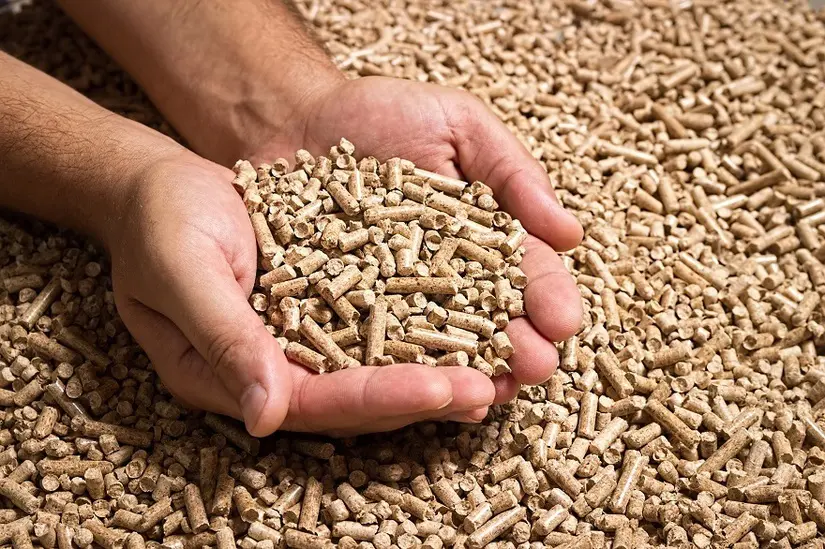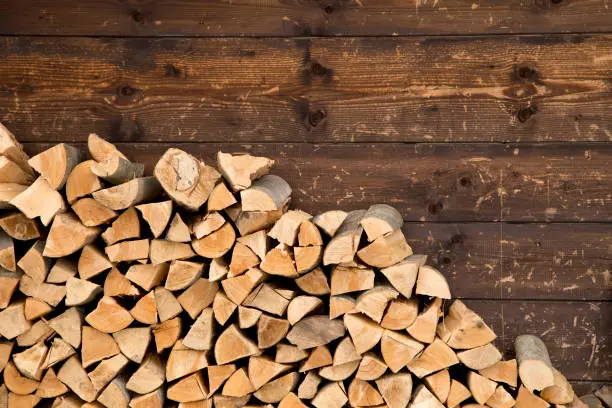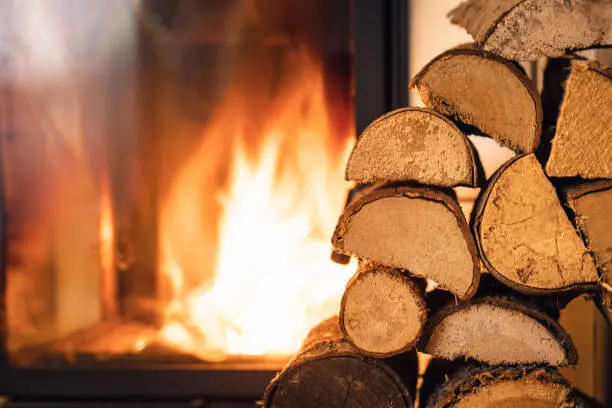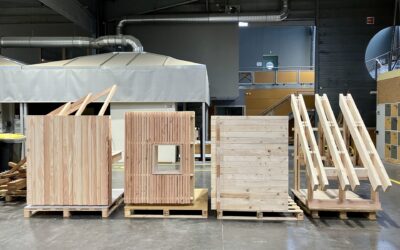Wood energy is at the heart of national energy transition strategies. 7.4 million French households heat with wood, according to a study by ADEME published in October 2023. If efficient appliances are used, wood heating is one of the main energy-related ways to reduce CO2 emissions (as wood captures CO2 during its growth) and to reduce French dependence on fossil and nuclear energy. A little-known fact is that “biomass” is already by far the largest renewable energy source in France (nearly half of all renewables), and in the world.
IS WOOD HEATING A HEALTH HAZARD?
The use of wood as an energy source has been the subject of much criticism due to the fine particles it emits. Many articles, particularly by doctors, have been published on this topic, warning about the health risks of wood heating.

Indeed, if we only look at particle emissions, wood is not the best energy source. These fine particles pose a real health issue. However, this primarily concerns old installations, fireplaces, and old stoves. The latest generations of stoves emit very few fine particles and are very efficient in terms of heat production. Therefore, the priority could be the modernisation of old wood heating systems, rather than replacing them with energy sources that emit much more CO2…
WHAT IS THE REAL IMPACT OF WOOD HEATING ON CLIMATE CHANGE?
Now, if instead of comparing wood to other energies solely based on particle emissions, we consider its impact on climate change, wood is far preferable to its competitors.

For instance, in a report published by ADEME in January 2022, a comparison is made between wood and gas:
- The impact of wood energy on climate change is significantly lower than that of natural gas.
- Producing one kWh of thermal energy from wood emits 11 to 30 g of CO2 equivalent, compared to 290 to 400 g in the case of natural gas.
- The impact of wood energy on the use of fossil resources is also significantly lower than that of natural gas.
Comparing wood, gas, and oil solely based on their direct environmental impact is a flawed reasoning. It is more appropriate to consider the impact caused by the entire production cycle of these energies. And when assessing the entire production and transportation cycle, the figures presented in an ADEME report from 2018 are largely favourable to wood heating:
CO2 emissions per heating energy for the consumption of 1 kilowatt-hour:
- Wood boiler: 30 gCO2e/kWh
- Heat pump: 49 gCO2e/kWh
- Heating network: 100 gCO2e/kWh
- Electric radiator: 147 gCO2e/kWh
- Gas boiler: 227 gCO2e/kWh
- Oil boiler: 324 gCO2e/kWh
THE MAIN ADVANTAGES OF WOOD HEATING
- Economical: Wood is often cheaper than other fossil fuels or electricity, especially if one has access to a local source at a reasonable price.
- Renewable: Wood is a renewable resource when sourced from sustainably managed forests, unlike fossil fuels.
- Energy Independence: Using wood for heating can reduce dependence on energy suppliers and fluctuations in market energy prices.
The subject is very complex, as no energy source is perfect, but we cannot compare multiple energy sources solely based on particle emissions. Admittedly, the issue of fine particles in the air is concerning, but what about the much more serious problems related to CO2 emissions, which are the cause of current climate change?

There are significant differences in particle emissions between old open wood stoves and the latest systems, which emit much fewer particles (the ratio is 1 to 30).
AN ECOLOGICAL SOLUTION
Wood is considered a relatively low-pollution heating energy source in France, especially when used sustainably. Wood heating can be an ecological option for several reasons:
- Carbon Neutrality: Theoretically, wood is a renewable energy source that can have a carbon-neutral balance. This means that the amount of CO2 emitted during combustion is equal to the amount the tree absorbed during its growth. Thus, if forest management is carefully thought out and ensures that our forests remain carbon sinks, the impact on atmospheric CO2 levels can be minimised.
- Local Energy: Using wood for heating promotes local resources and can reduce dependence on imported fossil fuels. In France, the wood industry is fairly well developed and contributes to the local economy, particularly in rural areas.
- Modern Technologies: Modern wood heating technologies, such as wood pellet stoves and high-efficiency wood boilers, have significantly improved energy efficiency and reduced pollutant emissions. These systems can offer cleaner and more efficient combustion than older wood heating appliances.
In summary, while wood can be a less polluting heating energy source, particularly compared to fossil fuels, its environmental impact strongly depends on how it is produced, collected, and used. Sustainable forest management and the use of modern, efficient wood heating technologies are crucial to minimising its ecological footprint.
AN EXPERT: THE WOOD ENERGY ENGINEER
At ENSTIB, the Engineering programme offers a specialisation in Wood Energy in the third year. A wood energy engineer is a professional specialised in the production, processing, and use of forest biomass as an energy source. This profession lies at the intersection of engineering, environment, and renewable energy, playing a crucial role in the energy transition and the fight against climate change.

Here are the main duties and responsibilities associated with this profession:
- Biomass Management: Wood energy engineers are involved in the sustainable management of forest resources intended for energy production. This includes evaluating available biomass and developing sustainable forestry practices.
- Processing and recovery: They design and optimise processes for processing wood into various energy products, such as logs, pellets, wood chips, or biogas production through methanisation. Their role is to improve energy efficiency and reduce production costs.
- Design of Energy Systems: Engineers are also responsible for designing and sizing wood energy production facilities (boilers, biomass power plants, cogeneration systems), considering energy needs, environmental standards, and safety.
- Research and Development: They may work on innovating cleaner and more efficient technologies for converting biomass into energy, as well as improving the wood energy supply chain (collection, storage, transport).
- Consulting and Expertise: Wood energy engineers offer expertise to businesses, communities, and policymakers to develop renewable energy strategies based on forest biomass. This includes project evaluation, feasibility studies, and assistance in obtaining funding and grants.
- Sustainability and Environmental Impact: A significant part of their work involves assessing and minimising the environmental impact of wood energy production and use, by promoting sustainable forest management, and reducing greenhouse gas emissions.
This profession requires engineering training, ideally specialised in energy, natural resources, or the environment, supplemented by specific knowledge of biomass, renewable energy technology, and sustainable forest management.
Article written by Flavie Najean, Teacher, Head of Communications at ENSTIB, in collaboration with Thibaud Sauvageon, Wood Engineer and Doctor of Wood and Fiber Sciences, Head of Communications at LERMAB



